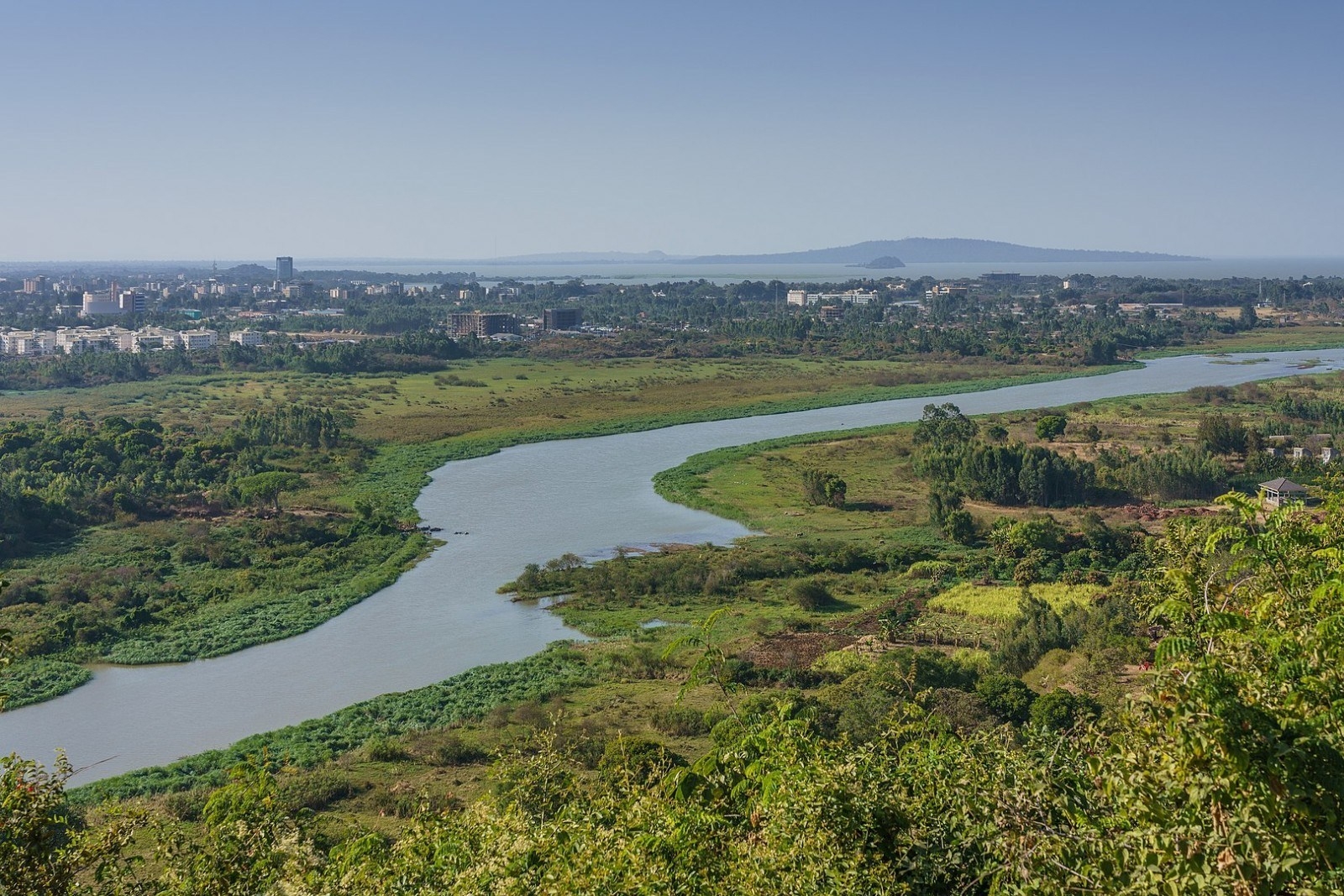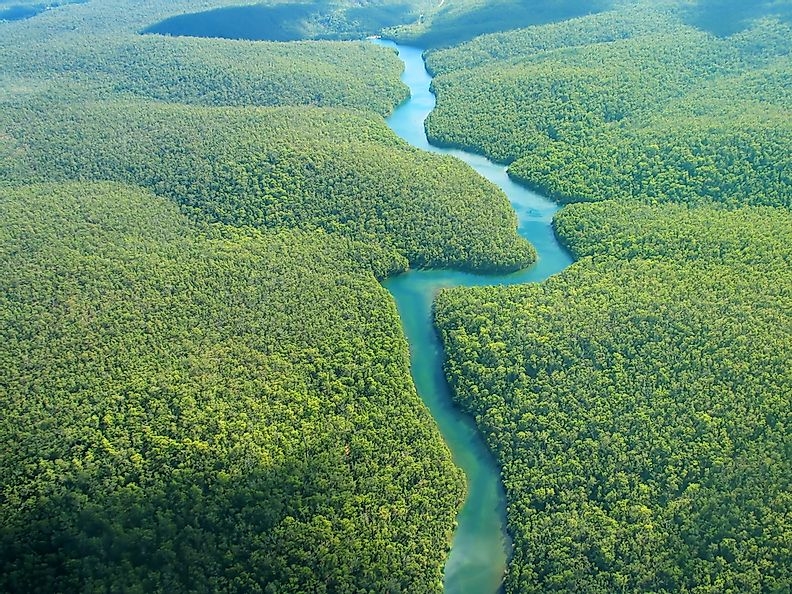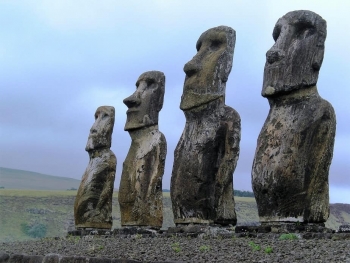Facts About Nile - The Longest River in the world
 |
| The Nile. Photo: Circle of Blue |
What is the longest river in the world?
Although most of us recognize the Nile as the lifeline of Egypt, the Nile is, in fact, an international river shared by 11 countries in Africa. However, it is the main source of water in two countries: Egypt and Sudan.
The Blue and the White Nile are the two tributaries of the river with the latter having a greater length than the former. The source of the White Nile is not yet fully determined but is believed to be somewhere in Burundi or Rwanda. According to some reports, Lake Victoria is considered to be the source of the White Nile which is, in turn, fed by the Kagera River whose two major tributaries are the Ruvyironza and the Nyabarongo rivers of Burundi and Rwanda, respectively. The Kagera is formed at the confluence of these two rivers near the Tanzania-Rwanda border.
The Blue Nile has a more defined origin in Lake Tana in Ethiopia. The two tributaries meet near the Sudanese capital of Khartoum. The Nile River’s final course is through Egypt before it forms a delta and drains into the Mediterranean Sea.
According to the USGS, the length of the Nile River is 4,258 miles. It is the longest river in the world as well as the longest river in Africa, Worldatlas cites.
| TOP 3 LONGEST RIVERS IN THE WORLD Nile: 4,132 miles Amazon: 4,000 miles Yangtze: 3,915 miles |
Geography of the Nile
The theory of the formation and development of the River Nile goes back some 25,000 years when the drainage of water from East Africa into the Victoria Lake led to the development of an outlet to the north, from which the rain began to flow to the Dam Lake.
As a result of the accumulation of sediments over many years, the water level in this lake gradually increased, resulting in a flood, after which the lake was drained and moved to the north. The flowing water of the Dam Lake, which formed the riverbed, connected the two main parts of the Nile, thus unifying the drainage of Lake Victoria to the Mediterranean.
People of the Nile
Many different and multicultural peoples live on the banks of the Nile because of its length and spread across more than one country and city. The average population density in the cultivated parts of the southern delta floodplains is 1,280 persons/km 2. The vast majority of the Nile peoples are peasant farmers. Among the people living on the banks of the Nile are those who speak Nilotic languages, such as the Shilluk, Dinka, and Nuer in South Sudan. These peoples live on the banks of the Nile and cultivate the surrounding land, as they graze.
Blue Nile
The Blue Nile originates from the prominent Ethiopian plateau, descending north and northwest from an altitude of 6,000 feet above sea level. The source of the Blue Nile spring is Lake Tana, which is estimated to supply the Nile with about 7% of its total volume. Although it may seem small, this water is essential because it is silt-free. The river then flows west and northwest through Sudan to join the White Nile in Khartoum. The river passes through a narrow valley most of its route from Lake Tana to the arrival of the Sudanese plains.
White Nile
The White Nile ps 500 miles (804,672 km) and provides the river with about 15% of its total size. The White Nile begins in the city of Malakal in Sudan, joins the Blue Nile in Khartoum, and has no significant tributaries. All areas of the White Nile are characterized by a quiet current, often with a narrow margin of marshland. The valley of the White Nile is wide and shallow, resulting in significant loss of water through evaporation and leakage.
Debates about Amazon is the longest river in the world
The longest river in the world, measured from its mouth to its most distant, year-round source, is likely the Amazon, which flows 4,345 miles from the Peruvian Andes through Brazil to the Atlantic Ocean. However, much depends on how you measure it.
Until 2007, the title belonged to the Nile, which runs 4,258 miles from the mountains of Burundi to its famed and fertile delta fan, where Egypt meets the Mediterranean Sea.
The two lengths are close enough that measuring techniques and philosophies can be quite controversial. In fact, the geographers who crowned the Amazon champion were funded in part by the Brazilian government.
 |
| Amazon River is also considered as the longest river by geographers. Photo: Worldatlas |
Top 10 longest rivers in the worldNile RiverThe Nile river is considered to be the longest river in the world. Lake Victoria is considered to be the source of the river. It flow through the Egypt, Uganda, Ethiopia, Kenya, Tanzania, Rwanda, the Democratic Republic of the Congo, Eritrea, Burundi, Sudan, and South Sudan. The Blue and the White Nile are the two tributaries of the river. Although for most of us, the the Nile River is longest river in world, there is a section of scholars who regard the Amazon River as the true winner of this title. Large rivers like the Nile and Amazon have numerous sources and many large and small tributaries. The need to find the furthest source of a river is there if the true length of the river has to be calculated. Often, such sources are located in remote and inaccessible locations, rendering the discovery of such sources an arduous task. The Amazon RiverThe Amazon River is undoubtedly the largest river in the world by discharge volume of water. However, its position as the second-longest river in the world is highly disputed as the title has for long been granted to the Nile River in Egypt. The dispute arises from the determination of the origin of the Amazon. A recent 2014 study claims that the origin of the Amazon can be traced to the Cordillera Rumi Cruz. The Yangtze RiverThe Yangtze River is the world's third longest river and the longest to flow entirely within one country. It is also the longest river in Asia. The river basin of the Yangtze houses one-third of the population of the most populated country in the world i.e., China. Traditionally, the government of China recognizes the Tuotuo tributary located in the Tanggula Mountains as the source of the river. According to new data, however, the source of the Yangtze River is located in the Jari Hill from where the headwaters of the Dam Qu tributary originate. These tributaries, and more join to form the mighty Yangtze River which finally drains into the East China Sea at Shanghai. The Mississippi RiverThe river system comprising of the Mississippi, Missouri, and Jefferson rivers, is regarded as the world's fourth longest river system. The river system drains 31 US states and 2 Canadian provinces. The Mississippi River begins in northern Minnesota where Lake Itasca is believed to be the source of the river and drains into the Gulf of Mexico. However, when we regarded the Jefferson River as the furthest source of the Mississippi River, then we get the Mississippi–Missouri–Jefferson river system. The Yenisei RiverThis is the world's fifth-longest river system and the largest draining into the Arctic Ocean. The Selenge River is regarded as the headwaters of this river system. The Selenge River is 992 km long and drains into Lake Baikal. The Angara river rises from Lake Baikal near Listvyanka and flows through the Irkutsk Oblast of Russia and finally joins the Yenisei River near Strelka. The Yenisei finally drains into the Arctic Ocean. The total length covered is 5,539 miles. The Yellow RiverCalled the Yellow River for its color, it is the result of huge amounts of loose sediment in the water, this massive river is also known as the Huang He. Its basin is considered to be the birthplace of ancient Chinese civilization, and it still holds great value for the country, both practically and symbolically. The Ob-Irtysh RiverThe Ob-Irtysh, also known as the Ob River, represents one of the three great Siberian rivers, along with the Yenisei and the Lena. It extends from the Altas Mountains and flows into the Arctic Ocean. The Parana RiverLocated in South America, the Parana River is one of the longest rivers in the world and the second largest on the continent. Its name is an abbreviation of the Tupi expression para rehe onáva, which translates to "like the sea." The Congo RiverPreviously known as the Zaire River, the Congo stretches in a curve across the continent of Africa and has the distinction of being the only river to cross the equator twice. It's also the deepest river on earth, with depths of over 700 feet in some places. The Amur RiverExtending along the border between northeastern China and Russia, the Amur River also known as the Heilong Jiang is the tenth longest river in the world. While the word amur is thought to originate from a term for “water,” the Chinese heilong jiang translates to "black dragon river." Source: Careerpower |
 | 14 Amazing Facts About Lenovo that Impress You As all we know, Lenovo Group Ltd. is Chinese international technology company with headquarters in Beijing, China, and Morrisville, North Carolina, U.S. There are lots ... |
 | Top 19 amazing facts about the attack on Pearl Harbor Pearl Harbor is a U.S. naval base near Honolulu, Hawaii, that was the scene of a devastating surprise attack by Japanese forces on December 7, ... |
 | 15 fun facts about Chile Top 15 fun facts about Chile would provide you a totally different viewpoint about Chile - the world's largest producer and exporter of copper! |


























